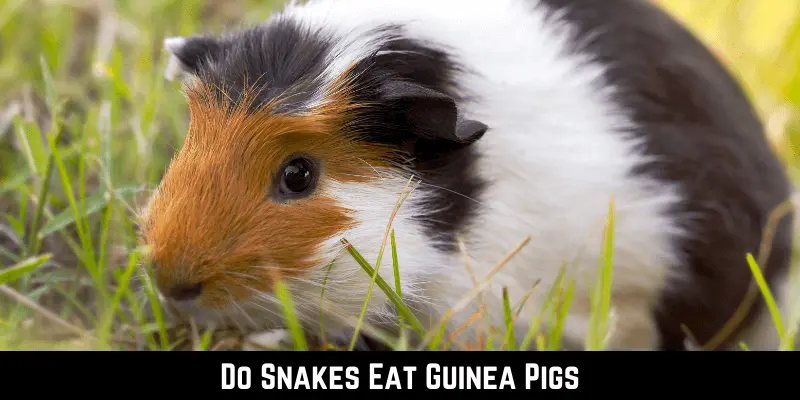Snakes are fascinating because they are as different as the species themselves. They are both scary and interesting, which makes them interesting. One frequent question about these strong reptiles tells a strange story of interspecies interactions: Do snakes eat guinea pigs?
Yes, snakes can eat guinea pigs. The species, size, and prey availability of the snake also affect the answer. Even though most wild snakes don’t eat guinea pigs very often, some bigger snakes can eat them, especially when they are kept in a cage.
So, let’s go on this adventure together as we figure out the complicated dance of nature and learn about the facts and risks of how the daily lives of snakes and guinea pigs meet in a unique way.
The Snake’s Diet
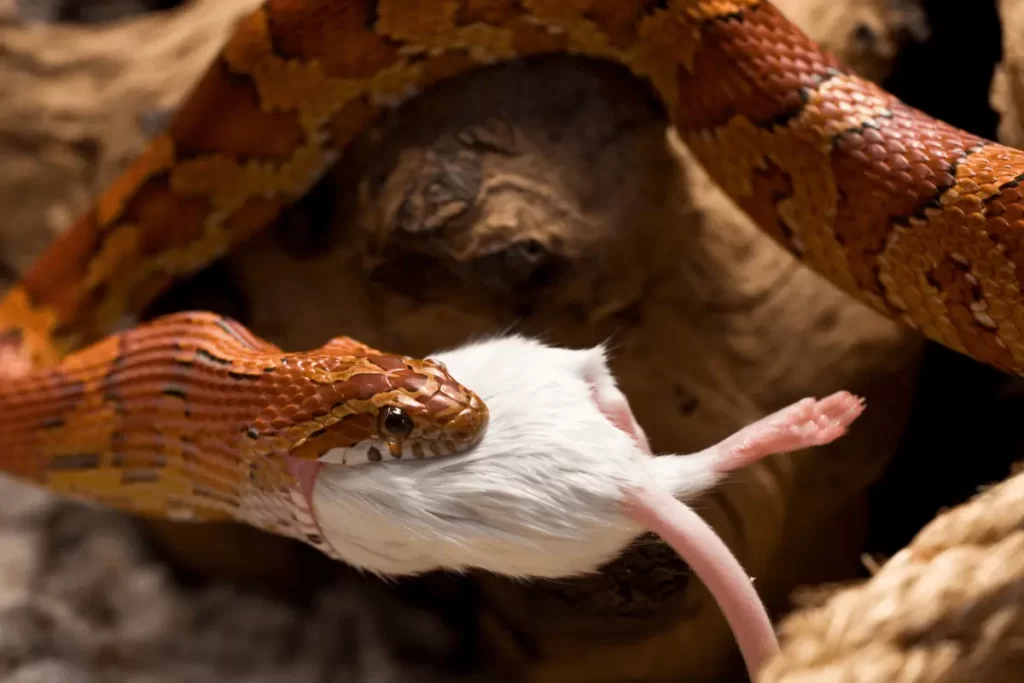
The snake has an interesting place in the rich web of life, and its food is interesting and varied. Even though they don’t have any legs, snakes are very good hunters. They eat a wide range of animals, including mice, birds, insects, and even other reptiles. People often think of them as the best pest control because they love to eat rats and mice.
Larger snakes, such as anacondas and pythons, have a ravenous appetite for larger animals like deer and even alligators. Snakes are the only vertebrates with the ability to dislocate their jaws, allowing them to consume prey that is far larger than their heads. But they don’t eat every day like most animals do; some reptiles can go weeks on just one meal since their metabolism is so slow.
Hunting Behavior of Snakes
Snakes hunt in secrecy and the cover of darkness, serving as an exemplar of the art of stealth in the animal kingdom. Their hunting style is based on being quiet and patient, and they often use a technique called “ambush predation,” which involves hiding and waiting for an opportunity to attack. They can pick up the heat signature of their prey or feel minute vibrations in the ground thanks to their enhanced senses.
For example, pit vipers have infrared-sensing pits that allow them to hunt in the dark. Venomous snakes use their speed and strength to poison their prey with their venom, while constrictor snakes use their size and strength to subdue and kill their prey with a devastating squeeze.
After catching their food, they eat the whole thing, a feat of cooking skill made possible by their flexible jaws and strong digestive systems. The snake’s method of hunting is, in truth, a ballet of lethal precision and smart calculation.
What Do Guinea Pigs Eat?
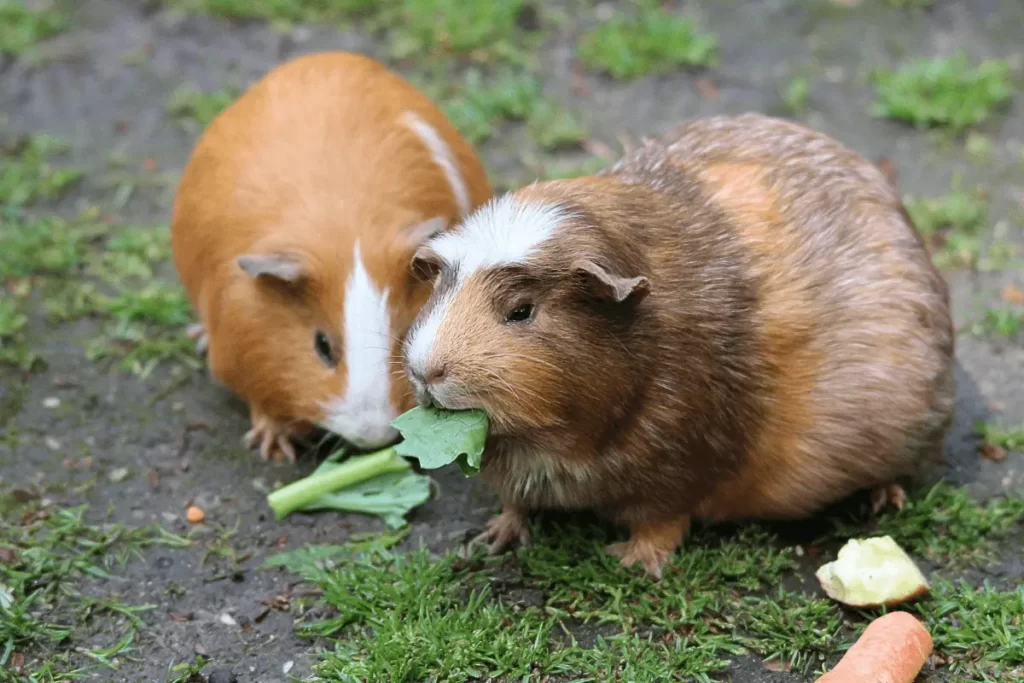
The guinea pig’s food is wonderfully diverse, primarily fresh fruits, vegetables, and premium hay. They can get all the roughage they need from timothy hay, and the constant grinding helps keep their teeth in good shape as their incisors keep growing. The guinea pig’s diet also includes a colorful assortment of leafy greens, bell peppers, and a sprinkling of fruits for an extra nutritional boost.
However, guinea pigs can’t produce their own Vitamin C, so they need to eat pellets designed for guinea pigs or foods high in Vitamin C, such as citrus fruits, daily. On this food trip, you have to be careful to avoid foods that are poisonous or make gas, like onions, potatoes, and some types of lettuce. Therefore, providing for a guinea pig is not just a matter of necessity but also an art form.
The Natural Environment of Guinea Pigs
When we think of a guinea pig’s home, we usually think of a typical household. However, the Andes Mountains provide a natural habitat for these cute little rodents, which can be traced back to the wilds of South America. Historically, guinea pigs did well in various habitats, including rocky regions, grassy meadows, and deep woods, showcasing their remarkable adaptability.
They dug underground tunnels in areas with mild winters and summers to protect themselves from predators and the outside world. Even though they are now kept as pets worldwide, their wild relatives still live in these places, which shows how hardy they are. Even though they are small, guinea pigs are important to the environment. They are both food for bigger animals and small tillers of the soil because they dig all the time.
Factors Influencing a Snake’s Diet
The Snake Species
An attractive interplay between biology and ecology decides what each type of snake eats. The green anaconda, for example, is well-known for its massive size and propensity for water, and its diet often includes huge, semiaquatic species like capybaras.
However, arboreal animals, such as the green tree python, use their high positions to their advantage when hunting, catching unwary birds and bats in mid-flight. Ophiophagous coral snakes showcase their aposematic colors by eating ophidians. This sheds light on the complex web of interspecies relationships, as the snake species determines its habitat and appearance and greatly influences its dietary preferences.
Size of the Snake and Its Prey
There is a symbiotic relationship between the size of a snake and the size of its prey, which gently affects the snake’s eating behavior. The size of a snake frequently indicates the size of the animal it can kill and eat. The Burmese python, for example, has been known to take down alligators with its strong jaws and stomach.
The tiniest of snakes, the thread snake, may eat ant and termite eggs and larvae for nutrition. Venomous snakes can knock out larger animals with their deadly toxins, while a constrictor’s coils may choke their prey.
Availability of Food
The type of food a snake eats is always based on what it can find in its surroundings. Many people believe these animals are opportunistic feeders because of their ability to adapt their diet to food availability.
When there are a lot of rodents, a snake might eat them, but when there aren’t as many, it might eat other animals, like frogs, or even eat its own kind. Changes in the seasons also affect the availability of food, which is why certain snakes hibernate throughout the winter.
Snake Species That Eat Guinea Pigs
Boa Constrictor
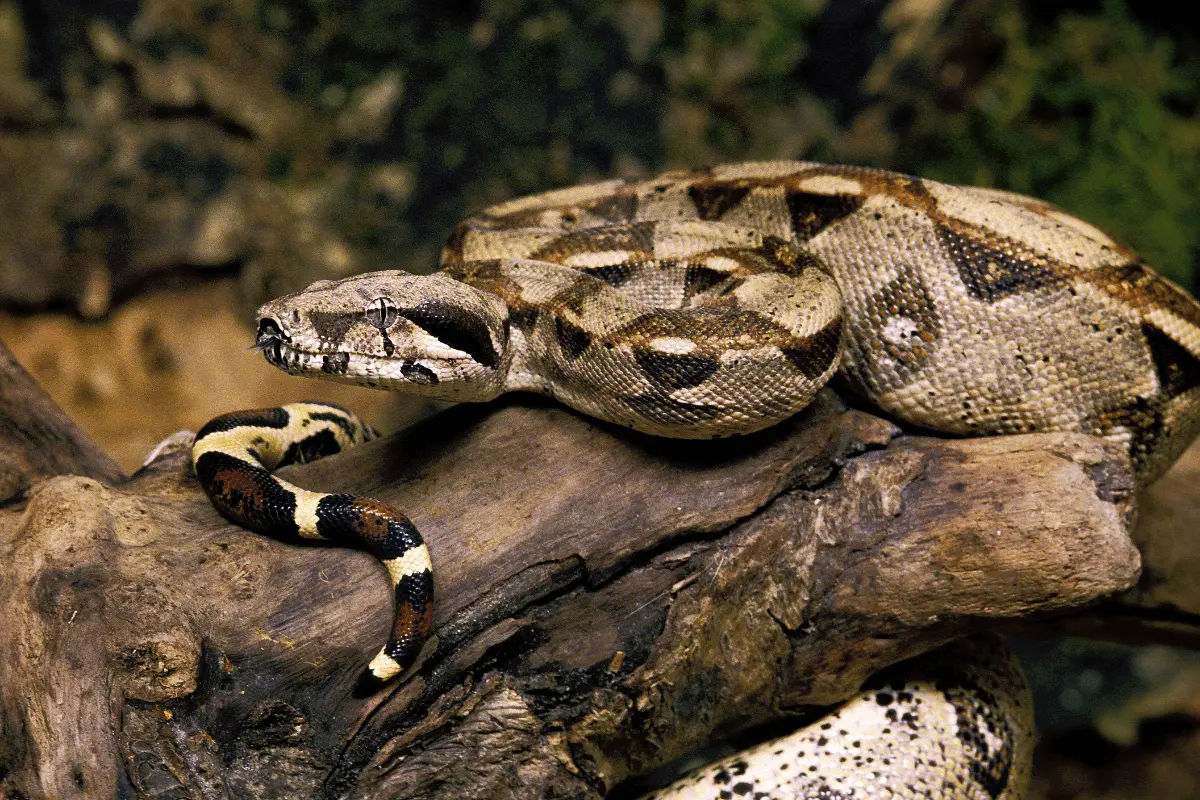
The Boa Constrictor is a strong ophidian species known to eat guinea pigs. This large animal, camouflaged in shades of brown, cream, and red, is an immobile sleeper who captures its prey.
When it reaches its prey, it uses its powerful muscles to encircle and immobilize it so it may be eaten slowly and methodically. The Boa Constrictor is native to much of South and Central America, and its ability to adapt to a wide range of climates—from lush rainforests to dry deserts—is a monument to its remarkable hardiness.
In the wild, they would eat bigger rodents, birds, or even monkeys for food. In captivity, they can and do eat guinea pigs, especially when there isn’t much else to eat.
Burmese Python
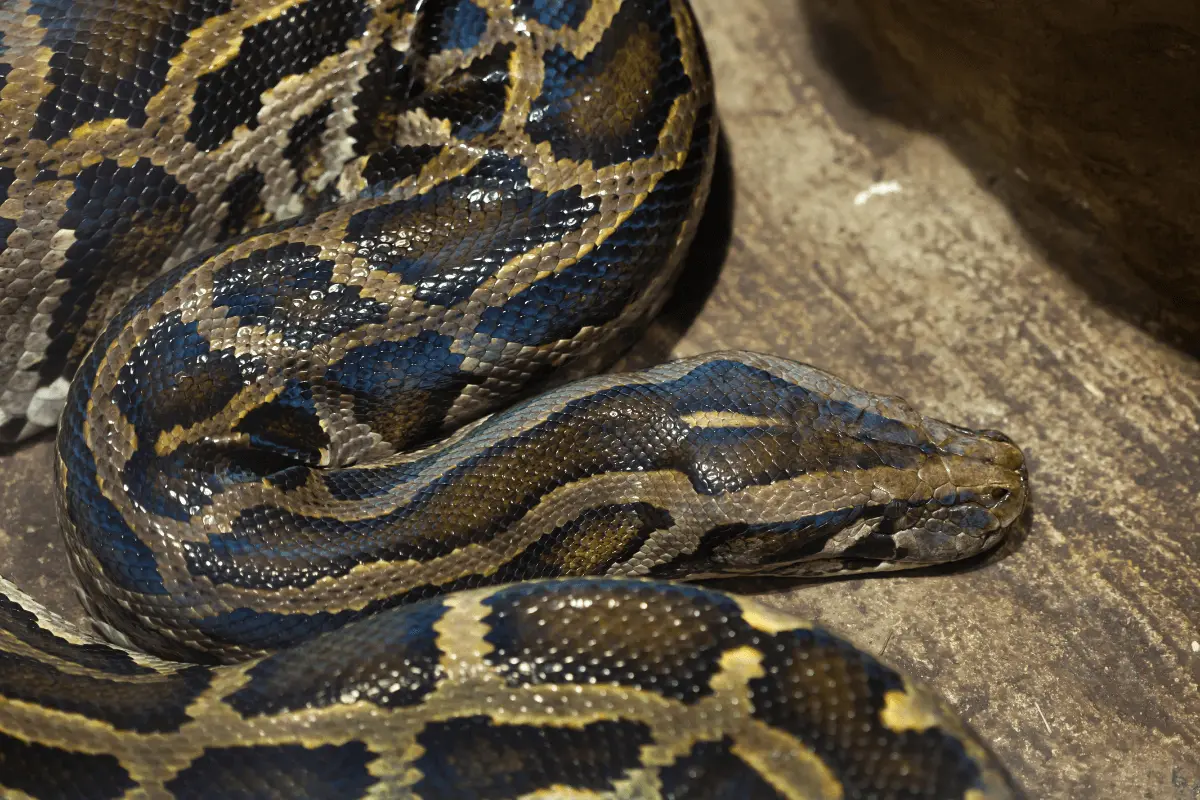
The Burmese Python lives in the woods of Southeast Asia. It is very big and has a striking pattern. It can take on large and powerful prey, such as guinea pigs, thanks to its impressive length of up to 23 feet. As a skilled constrictor, it wraps its body around its prey and slowly applies pressure until the victim gives in.
The mystery of the python is increased because it likes to hunt at night, especially when the moon is out. The Burmese Python can kill guinea pigs in captivity, even though their native habitat is far from the Andean guinea pigs.
Ball Python
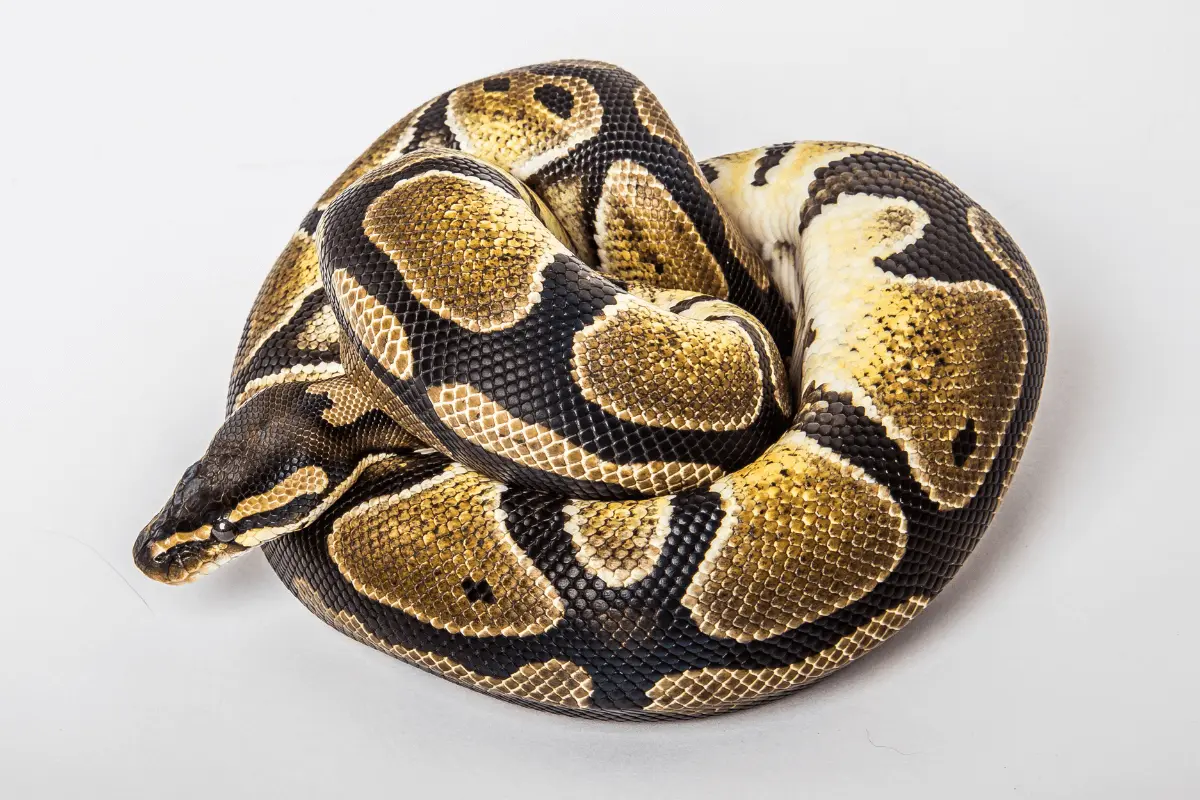
Unlike its bigger relatives, it is a more reasonable size but can still eat guinea pigs. This species has a dark, bold pattern on a lighter background. It is known for being calm and for curling up into a tight ball when attacked, which is how it got its name. Its natural habitat is sub-Saharan Africa, where it feeds on rodents and birds.
While these pythons survive on a diet of rats and mice in the wild, they will also eat guinea pigs if they are the right size for them. Therefore, the Ball Python serves as evidence that larger guinea pigs aren’t the only ones susceptible to predators.
Green Anaconda
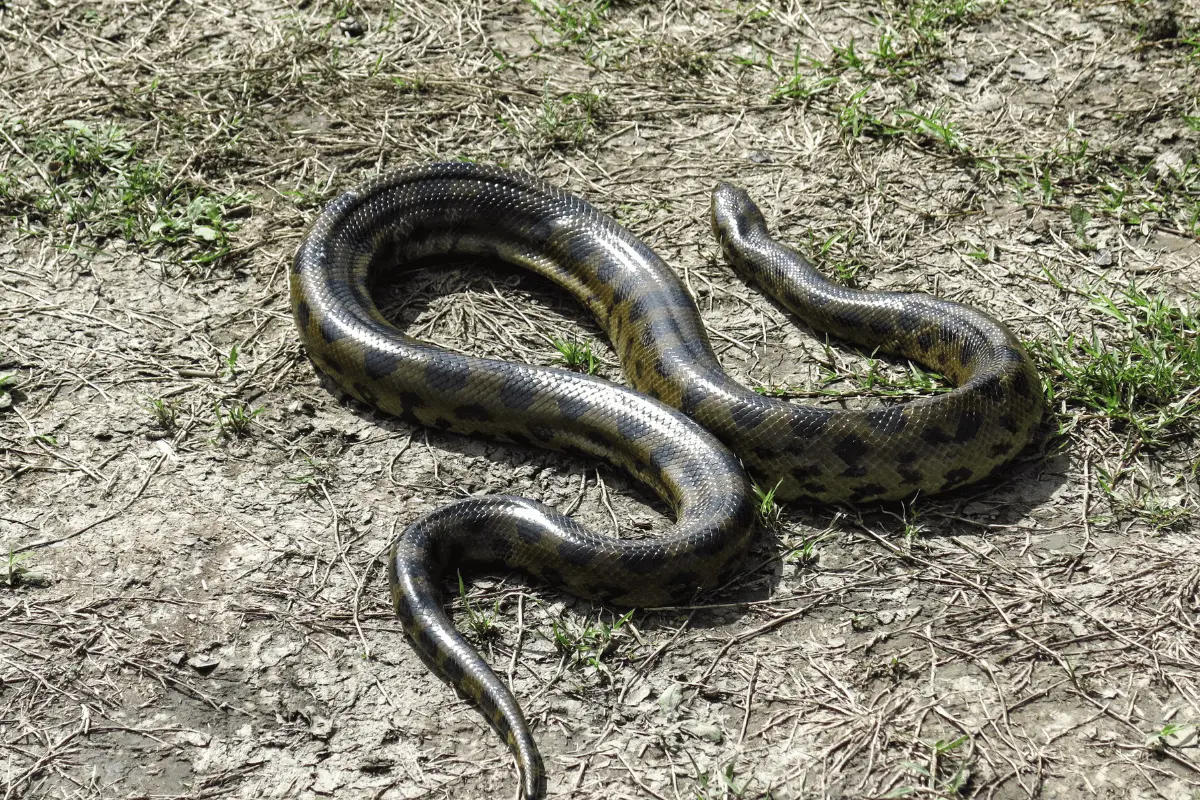
The Green Anaconda is a symbol of power and grandeur in the snake world, and it is on the list of ophidians that can eat guinea pigs. Among the longest and heaviest snakes in the world, this South American giant is quite impressive. It has perfected the art of camouflage in the water by decorating itself with a complex pattern of black and olive green.
A guinea pig is easy pickings for animals that have taken on capybaras and caimans. Their ability to coil and their vast size makes them well-suited to consuming huge quantities. However unlikely it is for a wild anaconda to meet a guinea pig, these rodents can make up an important portion of a captive anaconda’s diet.
Reticulated Python
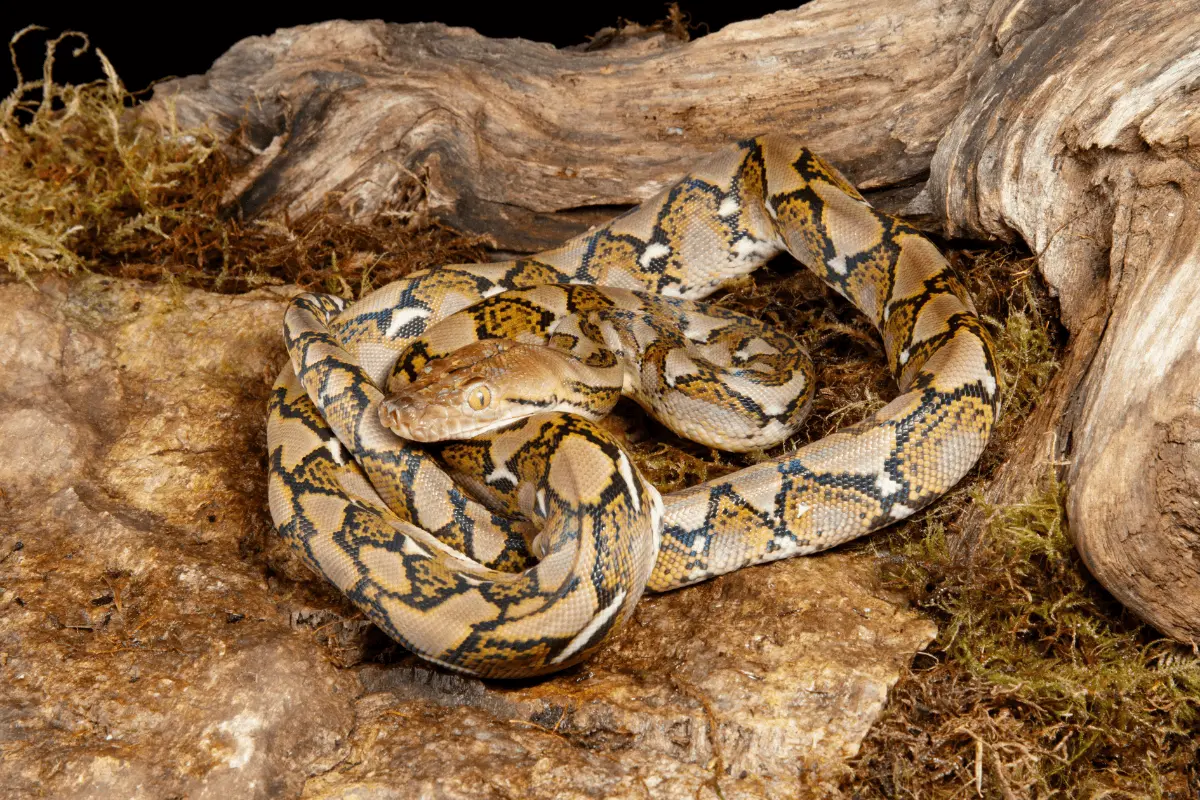
The Reticulated Python is the largest snake in the world. With their amazing geometric patterns, these Southeast Asian snakes are both beautiful and strong. They are very adaptable predators that eat a wide variety of animals, from small rodents to bigger omnivores.
They can easily capture and eat a guinea pig because of their size, strength, and hunting prowess. In the wild, their food consists primarily of natural species, but in the wild, where eating patterns might change, guinea pigs may be included.
Indian Python
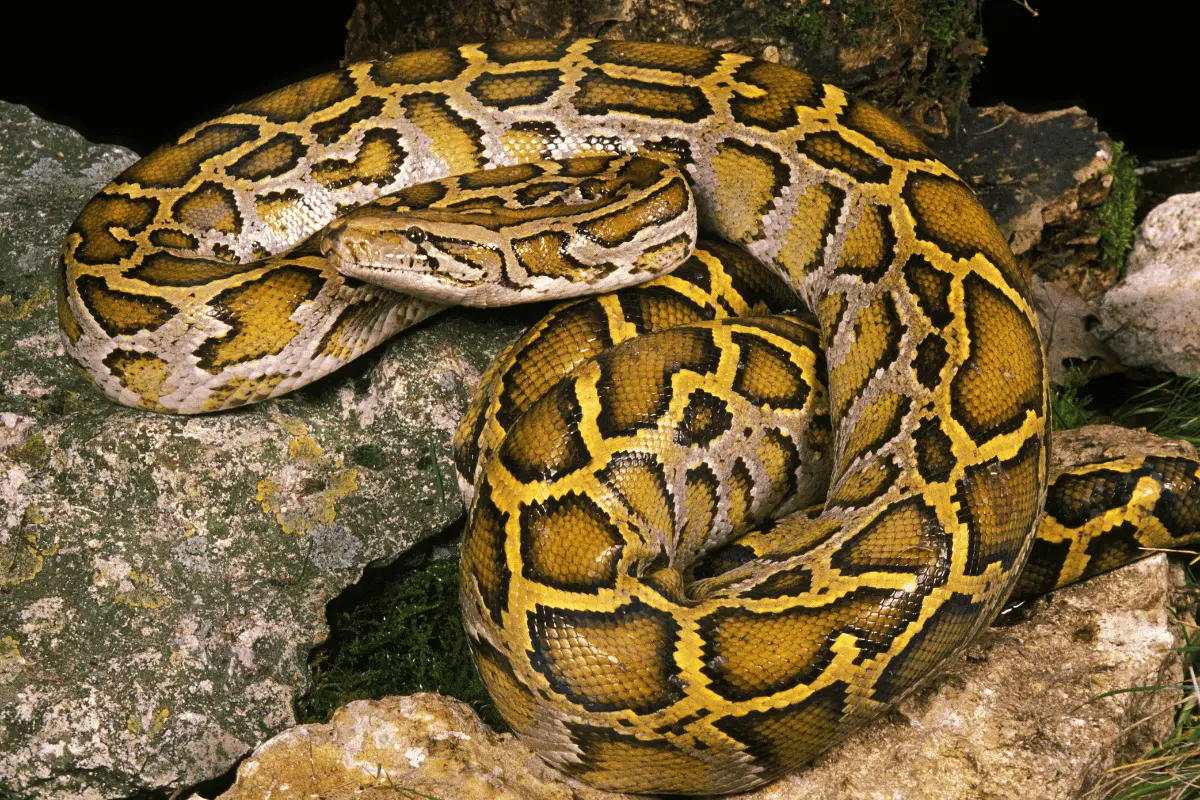
The Indian Python can eat guinea pigs. In its home subcontinent. The beautiful canvas of bright and dark spots on their skin reflects the dense vegetation of their tropical homes. Even though they are so big, they hunt with amazing speed and strength. Rats, tiny deer, and birds are all staples in their native diet.
In the wild, a guinea pig would be a rare sight, but in prison, where eating habits can change, guinea pigs could be eaten, especially since pythons can eat big animals.
Carpet Python
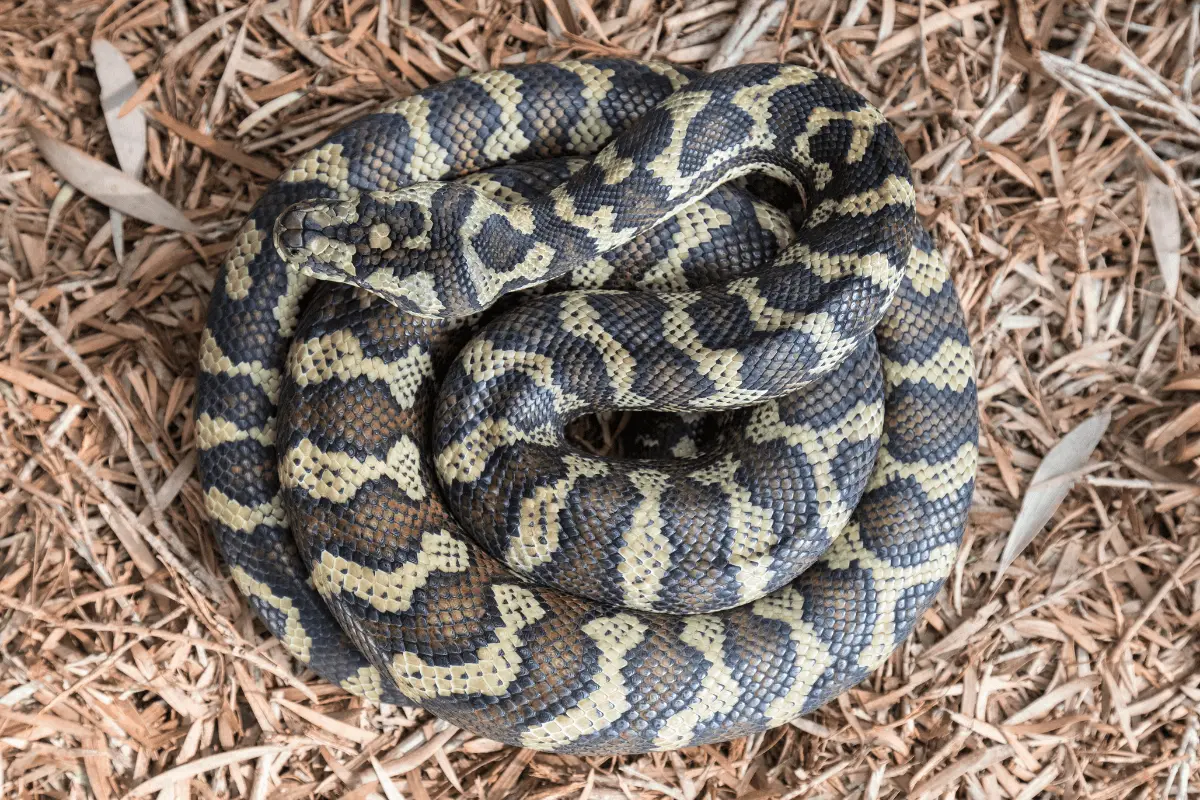
The Carpet Python lives in Australia and its islands. They may not be as massive as other pythons, but their predatory prowess is undeniable. Given that their natural food consists of all sizes of mammals and birds, they can easily be fed guinea pigs in captivity. Although guinea pigs are not a natural part of their diet, they are easy prey for them in captivity thanks to their flexibility and speed as predators.
Guinea Pigs as Pets and Snakes in the Wild
Guinea pigs are beloved pets for people of all ages due to their friendly natures and cuddly appearance. With their playful behavior and cute sounds, these make a home feel more like a community. They communicate with their caretakers and develop close relationships with them because they enjoy human company.
Even though their dietary needs are specific, they are a fun way to learn about fruits, veggies, and good hay. They need a full mix of care, including a well-stocked cage, plenty of exercise, and frequent grooming.
Despite being nocturnal, they are able to communicate with humans throughout the day. Even though they don’t live as long as some pets—the average lifespan is between 4 and 8 years—time spent with a guinea pig is full of happy and bonding memories.
Preventing Snake Attacks on Guinea Pigs
In order to protect guinea pigs against snake bites, owners must be aware of the risks and take preventative measures:
- A secure, snake-proof cage is the first and essential requirement. A hutch with fine wire mesh, secure doors, and a raised platform can prevent snakes from entering.
- The safety of the enclosure is guaranteed by routine inspections for weak places and timely repairs.
- Consider installing snake-proof fencing around your home if you happen to reside in a region where snakes are common.
- Avoid leaving out any food that could be eaten by rats, as this could attract snakes.
- Your guinea pig’s exposure to snakes can be reduced even further if you take it outside with you.
- Always use caution while handling both pets and keep snakes and guinea pigs in separate, secure enclosures.
- Proper care and precautions are what keep guinea pigs as pets safe.
Can Guinea Pigs Live Safely Around Snakes?
Complex interspecies interactions are displayed when guinea pigs and snakes coexist in the same environments. Given that some snake species are known to prey on guinea pigs, it’s easy to see the inherent dangers in such setups. However, many factors affect whether or not peaceful coexistence is possible.
The type of snake in question is the most important consideration. Smaller, non-venomous snakes that consume insects and small rodents offer less of a threat to guinea pigs. However, larger constrictor snakes may view guinea pigs as prey, making coexistence dangerous.
The physical differences between the two species are also important. Safer conditions can be achieved with the help of strong, impenetrable enclosures that leave no room for escape or intrusion. However, accidental exposure is always a possibility. Therefore, close monitoring is always required.
The arrangement’s viability is affected by the animals’ individual behaviors. In the presence of a predator, certain guinea pigs may become too anxious, while some snakes may become more aggressive or seek out alternative prey.
How to Keep Guinea Pigs Safe from Snakes?
Secure Enclosures
Your guinea pig’s primary line of defense begins with a sturdy, snake-proof enclosure. Opt for a cage with closely spaced bars, reinforced fastenings, and, if possible, a dual-lock mechanism. Consider adding a mesh screen layer for assurance against smaller, persistent snakes.
Routine Inspections
Never underestimate the importance of regular surveillance. Make it a habit to thoroughly inspect your pet’s dwelling and its immediate surroundings for any indications of tampering or weaknesses. Snakes are cunning creatures, capable of exploiting even the smallest of opportunities.
Snake Repellents
Utilise snake repellents as an additional layer of protection. Certain natural substances, such as essential oils of clove and cinnamon, are known to deter these reptiles. Nevertheless, use these substances sparingly, taking into account the delicate olfactory system of your guinea pig.
Nocturnal Protection
Protecting your guinea pig during the night is crucial, given the nocturnal nature of many snakes. Consider relocating the cage indoors or introducing snake-proof fencing around the enclosure once the sun sets. Also, ensure there are no nearby trees or structures that snakes could use to circumnavigate your defenses.
Professional Assistance
Do not hesitate to call for professional help when the situation becomes too daunting. Services provided by pest control or wildlife experts can offer valuable advice and implement measures tailored to your specific needs.
Supervised Playtime
Ensure all outdoor excursions are supervised. Not only does this promote bonding with your guinea pig, but it also lets you remain vigilant for potential threats. The blend of your keen observation and your pet’s natural alertness can be a potent deterrent to any snake.
Conclusion
In the complex dance of nature, every species has its rhythm based on its wants and instincts. An example of this basic difference is the relationship between guinea pigs and snakes. Some snakes can indeed eat guinea pigs.
However, this tendency is often limited to specific species and strongly influenced by the conditions in which they are kept. Even while these species can coexist under carefully monitored settings. Many people love many kinds of pets, but there’s a special place in the hearts of those who love guinea pigs. We may build nurturing habitats that appreciate nature’s variety via responsible pet ownership and awareness of diverse species’ needs.
